-
About
- About Listly
- Community & Support
- Howto
- Chrome Extension
- Bookmarklet
- WordPress Plugin
- Listly Premium
- Privacy
- Terms
- DMCA Copyright
- © 2010-2025 Boomy Labs


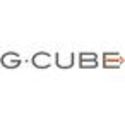 Akanksha Garg
Akanksha Garg
Listly by Akanksha Garg
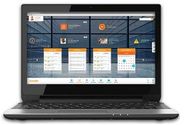
A New age LMS does much more than just making content accessible and keeping a track of the learners' progress. Modern LMSs also make sure that the learning content remains relevant to the needs of the learners. They do so by extensive content catalogues, which are searchable and make sure that the learner can quickly arrive at the required information.

Continued training efforts are required for companies to stay ahead of the competition and keep employees' skills up-to-date or in compliance with the law. But with the pace that every industry is advancing, it is often difficult to provide opportunities to the employees to learn new skills, techniques or processes with traditional means.

The corporate world is in a state of continuous flux and it has changed face tremendously in the last few decades. New technologies are creating new opportunities and the modern corporate world is fast realizing the merits of perennial learning. Training equips employees to be ready to take advantage of the opportunities at hand and do the job better.

Learning is continuous in our lives. But how much of what we learn do we actually remember after the learning event? As designers, we want to make sure that the learning content has a strong initial impact on the learners and is successful in retaining their attention throughout the course.
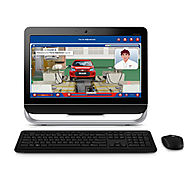
Training and learning are an integral part of the modern workplace. Every forward-thinking organization strives to create innovative avenues to provide training that educates, enables and inspires its people. This is true for employees within the organization as well as partners who closely work with the organization.

In EVE Online - a Massively Multiplayer OnlineGame (MMOG) about an interstellar empire - 500,000 players participate in a stunning variety of in-game activities. They not only engage in run-of-the-mill jobs of resource mining, trading and blowing up other players for profit but also the more exotic tasks like running corporations, public relations and even conning people through convoluted Ponzi schemes.

The growing popularity of e-learning solutions, a lot of ways of promoting critical thinking through technology-aided learning is also being talked about.

The Banking, Financial Services and Insurance (BFSI) industry is a highly dynamic sector where updated knowledge provides an extra edge over others in the competitive scenario. Over the last few years, increasing competition, newer regulatory bodies, as well as the tremendous impact of information technology has changed the way the industry conducts business.

There are many benefits of training and online learning in the corporate sector and no one can question the need for training initiatives. It is not a surprise that many organizations make considerable efforts to create training initiatives to ensure that their employees are at par with the developments around them.

For modern organizations, there is always a pressing need to constantly provide training and learning opportunities in order to keep abreast of the latest in the field and suitably satisfy the expectations of their employees. In addition to the compensation, job security, career advancement opportunities, learning and development opportunities features in the top five reasons that attract employees to a job.

Technology-aided learning has a lot of potential to significantly improve the way that learning and work are integrated. But the L&D function within an organization needs to clearly find important links between learning and business objectives of the organization.

Mobile Devices are an indispensable part of our people's life - both at work and home. Using smartphones or tablets, they read newspapers on their handheld devices, send work emails, plan their schedules, book airline tickets, find maps for desired destinations - it is difficult to list the many utilizations of the mobile device.
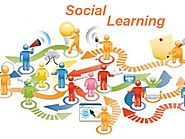
E-Learning and technology-aided learning are now being adopted by a majority of forward thinking organizations. As corporates are spending more and more time and money towards creating e-learning and building the platforms of delivery, it is now imperative that e-learning initiatives align to the needs of the entire learner group - including learners who are new and feel overwhelmed, or older learners who are less than enthusiastic.

There are various challenges that can create hindrance to learning success. Here are some of the most common challenges of implementing blended learning and the ways to overcome them.

With evolving technologies, the need for high-end e-learning is also on a continuous rise. The corporate world has seen and experienced the success of traditional e-learning and now want more. Not just in terms of delivering knowledge but the inclusion of the elements of interactivity and motivation for learners.
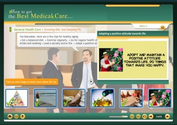
E-learning is moving away from a didactic approach to more engaging approaches that do much more than just transfer knowledge. With a regular page-turner, the learners may well understand pre-set rules to approach a problem. But active learning environments, learners can be equipped to apply the knowledge acquired in different real-life situations that reinforce the practical utility of learning.

In the corporate world, the shelf-life of acquired knowledge and skills is getting shorter by the day. There is constant pressure on employees to proactively learn and get trained throughout their careers. The good news is that with technology-aided learning, e-courses are now readily available for the learners' consumption anytime and anywhere.

Trends come and go but there are some which inevitably change the path oft travelled. Till a few years ago, it was the norm to assign a time and place for a training session. Within an organization, employees travelled and moved work commitments to fit in the requisite trainings.

Whiteboard animations are videos that 'show' the learner an idea or concept through a series of live drawings. Being short and crisp, they align very well to the needs of the modern corporate learner and are fast gaining popularity as an impactful tool for learning delivery in technology-aided learning.

'Human beings are born to learn and learning is what they are better at than any other species'. This premise works throughout our lives - especially in the context of corporate trainings. In the cut-throat competitive work environment, learning has become a necessity in order to survive and succeed.
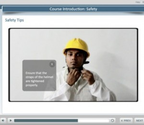
With the popularity of technology-aided learning, videos in learning have been gaining a steady acceptance for varied audiences and different learning objectives. Video-based learning is effective because of several reasons. Fighting the 'glazing-over' phenomenon which occurs often among learners, it successfully increases student engagement. It communicates information in a simple and direct manner.

7 Ways to ensure that SME interactions are faster and feed-in to the entire process if e-learning development.

Few ways that stories can be built into corporate learning - with some innovative thinking and the aid of technology to make them come alive.

The meaning of the word 'asynchronous' is 'not at the same time'. In the context of learning, it is used when a learner completes a learning initiative on his own time and schedule - without the intervention of an instructor. As technology advanced, the modes of delivery of Asynchronous Learning have evolved from one-to-one communication i.e.

For organizations that are looking to quickly transition to e-Learning, G-Cube offers Rapid Authoring Services. Using our Rapid Authoring Services you can take your organization's learning initiatives to next level without too much investment in time & money. We mean it! Under this service we can help organizations to convert their any existing training material into interactive e-Learning courses.
